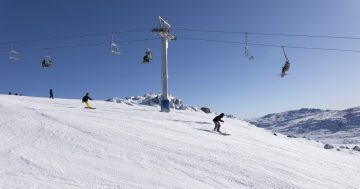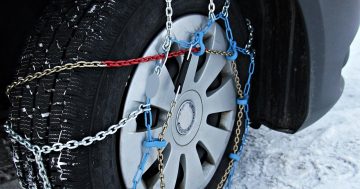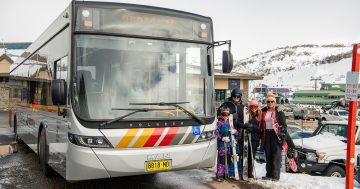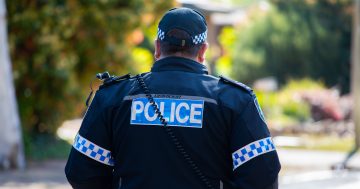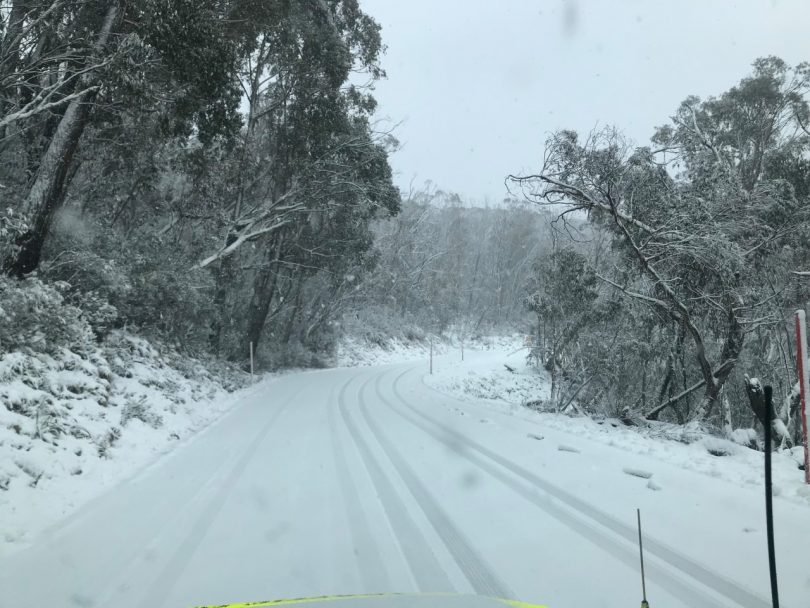
When driving on snowy roads, carry chains, slow down and leave plenty of space between vehicles. Photo: Monaro Police District.
Motorists should plan ahead before hitting the busy roads this June long weekend, with more snow expected in the mountains and roadworks causing delays on the Far South Coast.
Weatherzone has predicted snow in the Snowy Mountains across the Queen’s Birthday Weekend, 12 to 14 June.
Transport for NSW says the long weekend is the start of the Australian snow season and traditionally sees an increase in people travelling to the NSW Alpine Region.
But each winter, police and other service agencies assist drivers who have found themselves lost, bogged, or have crashed on slippery mountain roads.
“We regularly respond to incidents where ill-prepared and inexperienced drivers get into trouble in the mountains,” ACT Road Policing’s Detective Acting Superintendent Donna Hofmeier said.
“Drivers are reminded that these are relatively remote areas with extended response times for police and other emergency services.
“We are asking drivers, if you don’t have experience driving in the mountains, please reconsider your trip.”
Transport for NSW is also predicting higher traffic levels on other roads in South East NSW, including the Princes Highway, the Kings Highway and the Hume Highway.
There will be lane closures on the Snowy Mountains Highway at Brown Mountain due to slope stabilisation work.
The existing single-lane closures between 7:00 am and 7:00 pm on weekdays have been extended to 2 July due to the recent bad weather.
Motorists should allow around 15 minutes’ extra travel time.
But the overnight closures from 7:00 pm to 7:00 am on Sundays to Thursdays will end on Thursday (10 June).
There are detours via the Princes Highway, Imlay Road and the Monaro Highway, but they can add up to 1.5 hours to journeys.
For the latest traffic updates, call 132 701, visit the Live Traffic website or download the Live Traffic NSW App.
You can also use Transport for NSW’s journey planning tool to see where heavy traffic is predicted.
ACT Policing has provided advice for drivers expecting to head into the Snowy Mountains to see the snow.
Preparation before leaving:
- If you have never driven in these conditions, ask a more experienced person to drive.
- Use a 4WD if possible as they are the safest vehicles for wet, muddy roads.
- Before leaving, check for road closures on City Services.
- Take appropriate clothing (including waterproof footwear) and supplies should your journey be longer than expected.
- Be patient and avoid travelling in these areas at night-time.
- Let someone know of your plans.
Driving in the mountains:
- Turn your headlights on to increase visibility in fog.
- Ensure your windscreen wipers are working and your vehicle is mechanically sound.
- If conditions are hazardous, reduce your speed. Increase your braking distance by leaving ample room between your vehicle and the vehicle in front of you.
- Apply your brakes in a steady and controlled manner. Braking hard and suddenly on wet dirt roads can cause you to lose control.
- Surface moisture or dew can freeze and become “black ice”. Take particular care when travelling on roads in these conditions.
- If heavy sleet or snow make driving too difficult, pull over safely to the side of the road and wait until conditions improve.
If stopping to play in the snow:
- Always consider where you stop your vehicle.
- Pick a safe spot off the road but not in a location where you may get bogged or stuck.
- Ask a passenger to check parking areas before driving in. This is even more important if you’re in a 2WD vehicle.
- Remember, hypothermia can happen quickly. Make sure everyone in your group remains safe and well.
Original Article published by Albert McKnight on The RiotACT.









